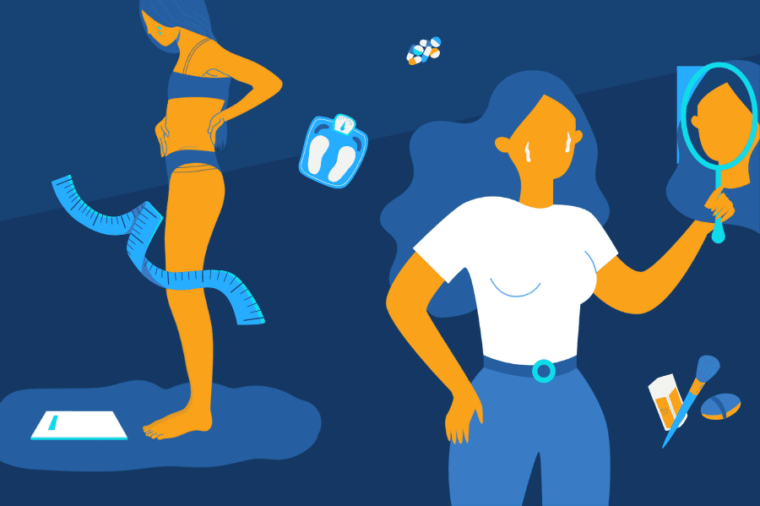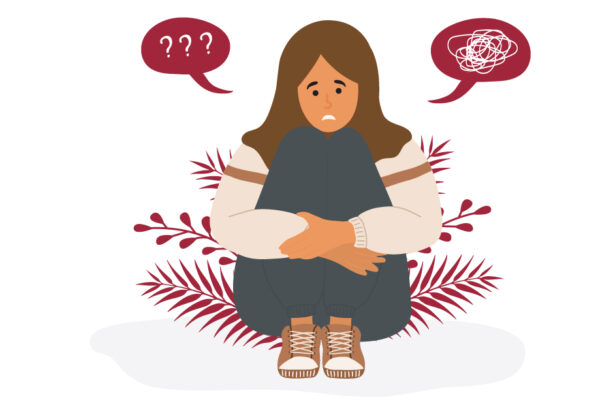For my inquiry project, I chose to research the topic of “How does the portrayal of beauty standards by the media contribute to the ongoing presence of body dysmorphia?” I chose to research this by breaking my inquiry question into 3 sub questions, and I will be addressing the third sub-question today.
For my second round of research, I researched the topic, “How have beauty standards affected the number of teenagers affected by BDD’s every year?“
To re-iterate, beauty standards are those societal norms that our society perceives as ideal and that a particular group of people, culture, or community, considers physically attractive or beautiful. In our society today, because of all the added pressures teenagers face, rates of mental health conditions affecting them continue to increase as well. As spoken about in my previous blog post, one of the most common disorders that continues to affect teenagers on a daily basis is body dysmorphia disorder, also known as BDD.
Beauty standards have been linked to an increase in the number of teenagers affected by body dysmorphic disorder (BDD) each year. As societal ideals of beauty have become more unrealistic, young people, particularly teenagers, develop heightened anxiety and distress about their appearance, as many do not believe they fit the ‘ideal standards’. These pressures to fit into these ‘ideal standards’ often stem from media, social media, and peer influences, which contribute significantly to the rising rates of BDD among teenagers. Everywhere we look, we’re bombarded with images of “perfect” bodies and faces. These “perfect” pictures are often unattainable, created through a mix of professional makeup, lighting, and digital editing. When teenagers compare themselves to these unrealistic standards, it can lead to feelings of inadequacy and self-loathing (2)
Recent studies show an incredible rise in the number of teenagers diagnosed with BDD. According to the Anxiety and Depression Association of America, 1.7% to 2.4% of the general population is affected by BDD, with majority of the cases affecting teenagers (2). The pressure to conform to beauty standards is a significant factor in this increase. The National Institute of Mental Health also reports that BDD is equally common in males and females, debunking the myth that only girls are affected.
Because of the high number of kids being affected by BDD’s in our society, let’s talk about some of the effects they leave (3):
- Mental Health: Regarding mental health, teenagers constantly worrying about their appearance can lead to anxiety, depression, and even suicidal thoughts.
- Academic Performance: The obsession with their appearance can often lead to youth and teenagers being distracted from studies, leading to declining grades and academic stress. This can also lead to negative mental health impacts.
- Physical Health: Because of the BDD’s affecting them, some teens might resort to extreme measures like excessive exercise, restrictive dieting, or cosmetic procedures, which can have lasting health impacts.

So what can we do to help decrease the rates of teenagers in our society being affected by these BDD’s? (4)
For us as a society to help work towards fixing this problem, we need to work together to edit curricula to be able to educate and talk about these issues in schools, build support systems for the kids suffering, and set boundaries and limits as to media literacy.
- Education: Schools providing education about topics regarding BDD’s that do affect teenagers can help teens understand that many images are manipulated and can help teens develop a healthier perspective.
- Support Systems: Building support systems and teaching teens they are not alone and have people around them to help when needed is another way we can work towards fixing this problem. Encouraging open conversations about body image issues can also help. Friends, family, and teachers should be supportive and watch for signs of BDD.
- Media Literacy: In addition to the first 2 points, monitoring the media teens digest every day is also important. Teaching teenagers to critically evaluate the media they consume can reduce the impact of unrealistic beauty standards and result in fixing these problems.

Beauty standards have a powerful impact on teenagers, contributing to the increasing number of those affected by BDD’s every year. As a community, we need to work towards changing these standards and support each other in developing a healthy self-image. By promoting realistic and diverse representations of beauty, we can help reduce the prevalence of BDD and ensure that every teenager feels confident and valued for who they are, not just how they look.
Thank you so much for reading my blog post and joining me on learning about the effects of body dysmorphic disorders on teenagers. In my next blog post, I look forward to reflecting on my journey researching my inquiry question this semester.
Thank you for reading my blog post and I look forward to sharing my reflection with you 🙂
Citations
- Staff. (n.d.). Staff editorial: Beauty Standards in high school are negatively affecting teens. The Hawk Eye. https://www.hebronhawkeye.com/opinion/2023/11/14/staff-editorial-beauty-standards-in-high-school-are-negatively-affecting-teens/#:~:text=With%20generations%20of%20kids%20growing,blind%20to%20seeing%20other’s%20flaws.
- Facts & Statistics: Anxiety and Depression Association of America, ADAA. Facts & Statistics | Anxiety and Depression Association of America, ADAA. (n.d.). https://adaa.org/understanding-anxiety/facts-statistics
- Cammarata, C. M. (Ed.). (2023, May). Body dysmorphic disorder (BDD) in kids and teens (for parents) | nemours kidshealth. KidsHealth. https://kidshealth.org/en/parents/bdd.html#:~:text=Kids%20and%20teens%20with%20the,social%2C%20and%20learn%20coping%20skills.
- Body dysmorphic disorder (BDD) (for teens). Blue Ridge. (n.d.). https://www.blueridgetreatment.com/post/body-dysmorphic-disorder-bdd-for-teens



Hi! I wanted to ask if you think that schools could do a better job of explaining body dysmorphia to teenagers and how they can go about that.